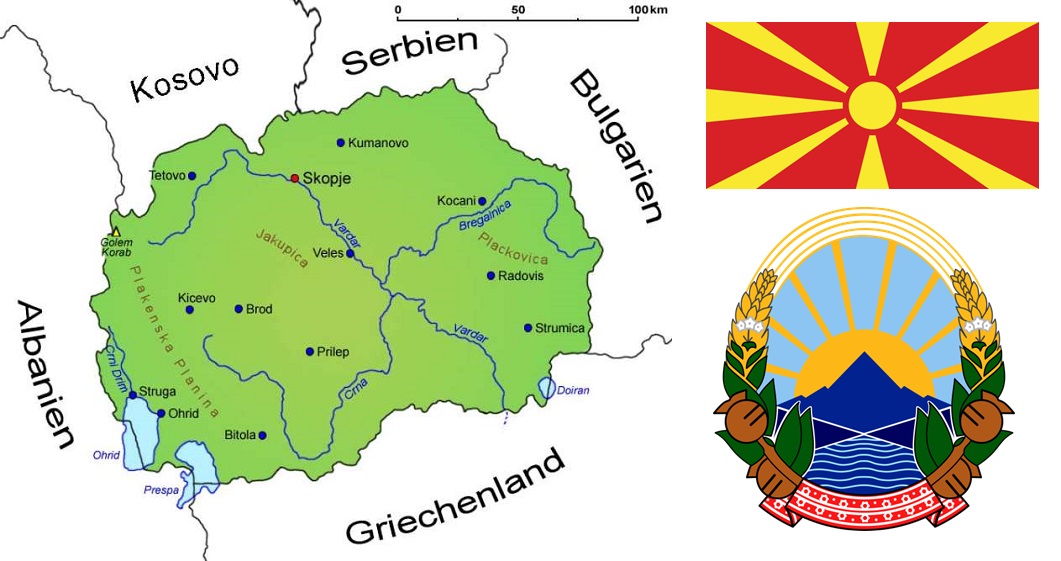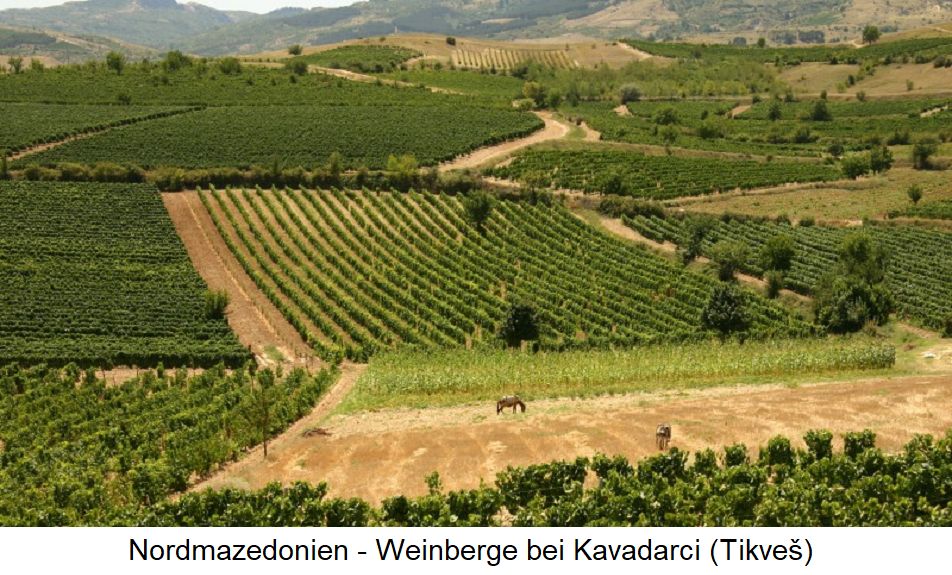Results
2,284 Results
Loading more Results ...
Loading more Results ...
Wine regions in North Macedonia 2 growing regions
Description to North Macedonia
The Republic of North Macedonia in Southeast-Europe with the capital Skopje covers 25,713 km². It borders Serbia to the north, Bulgaria to the east, Greece to the south, Albania to the west, and Kosovo to the northwest. It is partially located in the northwest of the historical region of Macedonia.

The state was established in 1991 following the disintegration of the former communist state of Yugoslavia under the name Macedonia. For historical reasons, both Macedonia and Greece (for the region of Macedonia with the three-fingered peninsula of Chalkidiki and the monastic republic of Athos) claimed this name for themselves. After a long-standing dispute, an agreement was reached between the two states in 2018. On February 12, 2019, the official renaming to North Macedonia (Republika Severna Makedonija) took place.
Viticulture
Viticulture in North Macedonia has a long tradition and a three-thousand-year history. Even in ancient times, wines were highly sought after, as well as during the Ottoman dominance in the Balkans and the prohibition of alcohol. The Mediterranean-continental climate is characterized by mild winters and warm summers.
The wine law that came into force in 2004 is based on the standards of the European Union. The designation for quality wines with controlled origin is Vrvno Vino. In the 1980s, two-thirds of the wine production of Yugoslavia was produced in Macedonia. Today, the approximately 40 wineries are fully privatized. The most significant producer is the winery Tikves, founded in 1946 as a wine cooperative. Others include Bovin-Negotino, Lozar-Veles, and Povardarie-Negotine. Noteworthy are the red wines from the autochthonous varieties Kratosija (Tribidrag) and the dominating Vranac, which occupies about one-third of the area. There are three wine-growing regions:

Povardski (Vardartal)
Here, 85% of the wines are produced. The wine-growing areas are located centrally along the Vardar River. These are Gevgelija-Valandovo, Kochani-Vinica, Ovce Pole, Skopje, Strumica-Radoviste, Tikveš, Titov Veles, and Veles.
Pcinsko Osogovski
Here are the wine-growing areas located in the east: Kocani, Kratovo, Kumanovo, and Pijanecki.
Pelagonijsko-Poloski
Here are the wine-growing areas located in the west: Bitola, Ohrid, Tetovo, Kicevo, Prilep, and Prespa.
Grape Variety Overview
In 2022, the vineyards covered 24,776 hectares, and the wine production volumes were 854,000 hectoliters. About 80% are planted with red wine varieties and 20% with white wine varieties. The grape variety overview (Kym Anderson):
Grape Variety |
Color |
Synonyms or Name in North Macedonia |
Hectares |
| Vranac | red | Vranec | 9,500 |
| Dimyat | white | Smederevka | 6,500 |
| Merlot | red | - | 1,240 |
| Cabernet Sauvignon | red | - | 1,020 |
| Tribidrag | red | Kratošija | 1,000 |
| Riesling | white | - | 900 |
| Chardonnay | white | - | 750 |
| Pinot Noir | red | - | 500 |
| Rkatsiteli | white | - | 460 |
| Prokupac | red | - | 445 |
| Muscat Blanc / Muskateller | white | Temjanika | 400 |
| Stanušina Crna | red | - | 400 |
| Muscat d’Hamburg | red | - | 350 |
| Welschriesling | white | Graševina | 270 |
| Pamid | red | Plovdina | 250 |
| Župljanka | white | - | 250 |
| Sauvignon Blanc | white | - | 185 |
| Žilavka | white | - | 185 |
| Plavac Mali | red | - | 50 |
| Kadarka | red | - | ? |
| Opsimo Edessis | white | - | ? |
| Traminer | white | Traminac | ? |
| Začinak | red | - | ? |
| Ohridsko Crno | red | - | ? |
| Terrano | red | - | ? |
| remaining red varieties | red | - | 71 |
| remaining white varieties | white | - | 51 |
Map: Goruma
Flag: by User:SKopp, Public Domain, Link
Coat of Arms: by MacedonianBoy, Public Domain, Link
Vineyards: By F00700I - Own Work, CC BY-SA 3.0, Link
Source 1st paragraph: WIKIPEDIA North Macedonia
Recent wines 8
 Chateau Kamnik
—
2018 Syrah Reserva "Ten Barrels"
Up to 35.00 €
Chateau Kamnik
—
2018 Syrah Reserva "Ten Barrels"
Up to 35.00 €

 Chateau Kamnik
—
2019 Gewürztraminer "The Orange"
Up to 25.00 €
Chateau Kamnik
—
2019 Gewürztraminer "The Orange"
Up to 25.00 €


